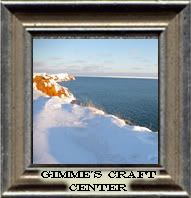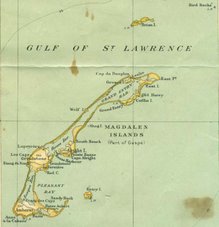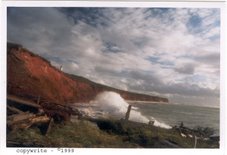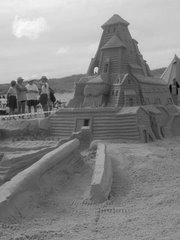A Visit to the Magdalen Islands
Arriving on the Ma gdalen Islands, Iles-de-la-Madeleine in French, the dramatic change of scenery astounds the first time visitor. If arriving by plane, the lagoons with their azure and sandy coloring, stretching for miles, has a serene, calming effect on the senses. If arriving by ferry, the landmasses of the dozen or so islands that make up the Archipelago and the dunes connecting the majority of them blend, break apart and then stretch out of sight and into the horizon. Each island is enlivened by rich green valleys, spectacular cream sandy beaches, deep red cliffs and countless shades of blue from the lagoons, the sea and the sky.
gdalen Islands, Iles-de-la-Madeleine in French, the dramatic change of scenery astounds the first time visitor. If arriving by plane, the lagoons with their azure and sandy coloring, stretching for miles, has a serene, calming effect on the senses. If arriving by ferry, the landmasses of the dozen or so islands that make up the Archipelago and the dunes connecting the majority of them blend, break apart and then stretch out of sight and into the horizon. Each island is enlivened by rich green valleys, spectacular cream sandy beaches, deep red cliffs and countless shades of blue from the lagoons, the sea and the sky.
 gdalen Islands, Iles-de-la-Madeleine in French, the dramatic change of scenery astounds the first time visitor. If arriving by plane, the lagoons with their azure and sandy coloring, stretching for miles, has a serene, calming effect on the senses. If arriving by ferry, the landmasses of the dozen or so islands that make up the Archipelago and the dunes connecting the majority of them blend, break apart and then stretch out of sight and into the horizon. Each island is enlivened by rich green valleys, spectacular cream sandy beaches, deep red cliffs and countless shades of blue from the lagoons, the sea and the sky.
gdalen Islands, Iles-de-la-Madeleine in French, the dramatic change of scenery astounds the first time visitor. If arriving by plane, the lagoons with their azure and sandy coloring, stretching for miles, has a serene, calming effect on the senses. If arriving by ferry, the landmasses of the dozen or so islands that make up the Archipelago and the dunes connecting the majority of them blend, break apart and then stretch out of sight and into the horizon. Each island is enlivened by rich green valleys, spectacular cream sandy beaches, deep red cliffs and countless shades of blue from the lagoons, the sea and the sky.The Archipelago is located in approximately the center of the Gulf of Saint Lawrence, on the eastern coast of Canada. The islands have been pushed up out of the sea and into a half moon or fish hook shape, stretching approximate
 ly sixty-five kilometers, from end-to-end, as the crow flies. They are enjoyed by a mild maritime climate that is strikingly different from the mainland. The huge shallow water masses that encircle the islands, temper the weather and create milder temperatures, because it takes more time to warm or cool water than it does to change the temperature of air or land. The air is pure and invigorating.
ly sixty-five kilometers, from end-to-end, as the crow flies. They are enjoyed by a mild maritime climate that is strikingly different from the mainland. The huge shallow water masses that encircle the islands, temper the weather and create milder temperatures, because it takes more time to warm or cool water than it does to change the temperature of air or land. The air is pure and invigorating.Constant breezes greatly influence the climate of the islands. They keep the temperatures milder in the winter and cooler in the summer months. It is because of these winds that the islands have been attracting so many visitors. They come for a number of reasons of course, such as the beaches, swimming, cla
 m-digging and all the extreme water sports that take place. They come for the culture and the seafood, all of which is enticing. They come for the magnificent scenery and to be with the seal. They come to learn about a quieter style of living.
m-digging and all the extreme water sports that take place. They come for the culture and the seafood, all of which is enticing. They come for the magnificent scenery and to be with the seal. They come to learn about a quieter style of living.The Magdalen Islands has seven islands that are inhabited and several other islands and islets that are inhabited by only the birds. Those islands which are easily accessible to motorists, cyclists and hikers are Grand Entry or Coffin Island, Grosse Isle, Pointe-aux-Loups, House Harbour, Grindstone and Amherst. Entry Island is an island populated by people of Irish and Scottish descent and is accessible only by boat. Of the uninhabited islands, Brion Island is the only one capable of sustaining human life. It is an ecological reserve owned by the Quebec government, who only allows a limited stay by visitors. The Bird Rocks, which were navigational hazards in the past, because of its strategic location in the shipping lanes between the Saint Lawrence River and the rest of the world, is now only inhabited by maritime bird life. Other islets are Deadman’s Rock, Seal Island and Shag Island all of which have their fair share of the shipwrecked history that surrounds the
 Magdalen Islands.
Magdalen Islands.















3 comments:
Hey there Gimme I love the pics and the stories about the island great info.
Thanks Jadey. I'm trying new things all the time.
Today on my daily photo Blog about the Town of Château-Gontier (France) my subject is about humanism.
It is high time that humanism is with dimensions in Wall Street and on the other stock exchange places in the world.
Come and visit my photo blog.
Make that our indifference does not make us to them next victims.
Relay this fight in your own blog.
In advance thank you for them.
http://chateau-gontier-daily-photo.blogspot.com/
Post a Comment